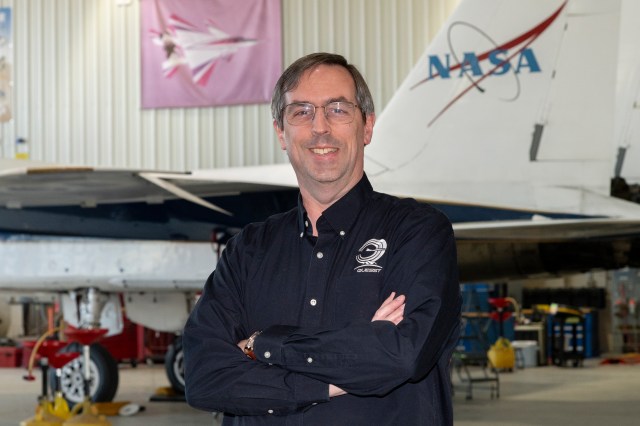
Thomas J. Horn
Project Manager for NASA’s Flight Demonstrations and Capabilities Project
Contents
Thomas J. Horn is the engineering project manager for NASA’s Flight Demonstrations and Capabilities (FDC) project at Armstrong Flight Research Center in Edwards, California. Since 2020, he is responsible for the overall management of the FDC portfolio, which includes support for NASA’s Quesst mission, the X-57 Maxwell, and the Crossflow Attenuated Natural Laminar Flow experiment, a new laminar flow design technique to improve the efficiency of aircraft wings.
Horn also serves as chair of the X-59 Flight Readiness Review Board, where he leads the team that will provide safety and mission success risk assessment during the first phase of X-59 supersonic research aircraft flight activities.
Experience
Previously, from 2014 to 2020, Horn was the FDC deputy project manager, working with NASA Armstrong managers to maintain and advance the center’s Dryden Aeronautical Test Range, support aircraft, Simulation Laboratory, and Flight Loads Laboratory. He also led the initial development of the NASA Aeronautics Research Mission Directorate (ARMD) Flight Data Portal (now the ARMD Test Data Portal) to improve ARMD retention and availability of test data and related information.
From 2004 to 2014, he was chief of NASA Armstrong’s Aerostructures branch, where he led a team of about 35 that provided structures and structural dynamics research, ground tests, and flight support for a variety of projects and aircraft, including Airborne Science campaigns, X-53 Active Aeroelastic Wing flight research, and thermal/mechanical testing for X-37 flaperon development and qualification.
He was originally hired to the Aerostructures branch in 1989 as an aerospace engineer, and through 2004, his focus was on thermal structural testing in the NASA Armstrong Flight Loads Laboratory. Major activities were hot structures test and instrumentation technique development, Pegasus Hypersonic Experiment (PHYSX) wing glove thermal qualification test, and X-43A structures engineer for Flight 1 and structures integrated product team lead for flights 2 (Mach 7) and 3 (Mach 10).
Horn first came to NASA Armstrong in 1985 as an engineering cooperative education student. Through 1988, he supported such projects as the X-29 Forward Swept Wing Technology Demonstrator, Advanced Fighter Technology Integration F-111 Mission Adaptive Wing, and F-18 High Alpha Research Vehicle.
Honors
During his time at NASA, Horn has received the NASA Outstanding Leadership Medal and NASA Gears of Government Award. He has also co-authored several NASA reports, conference papers, and journal articles, primarily covering test techniques for hypersonic aircraft structures.
Education
Horn earned a Bachelor of Science in aerospace engineering in 1989 from the University of Cincinnati in Ohio and a Master of Science in mechanical engineering in 1993 from Virginia Polytechnic Institute and State University in Blacksburg.




























